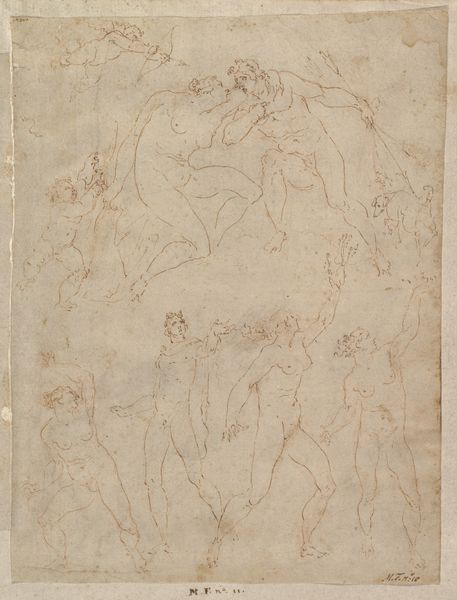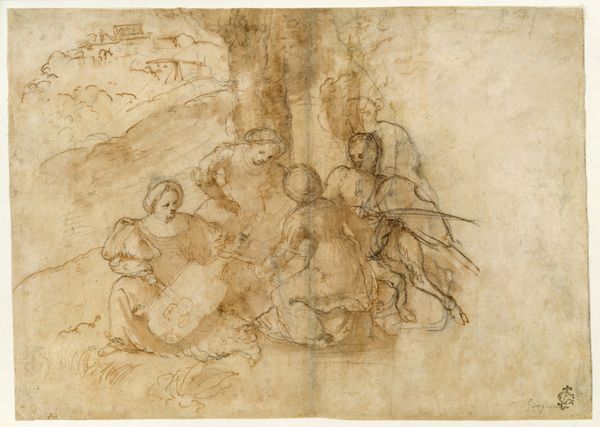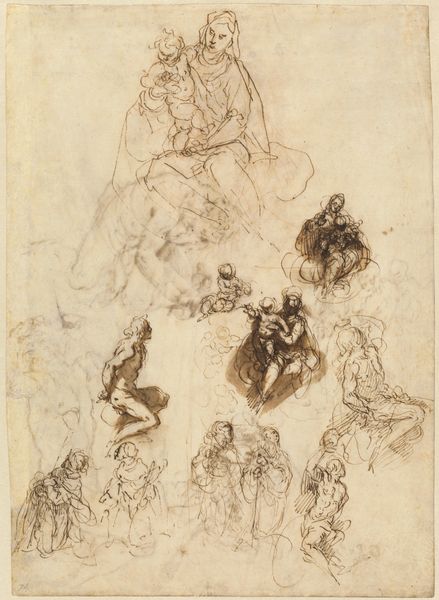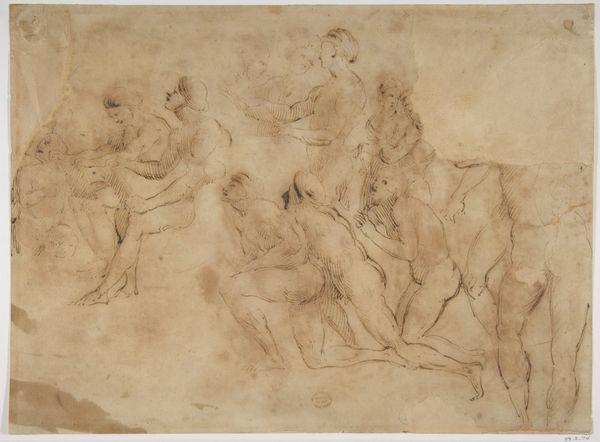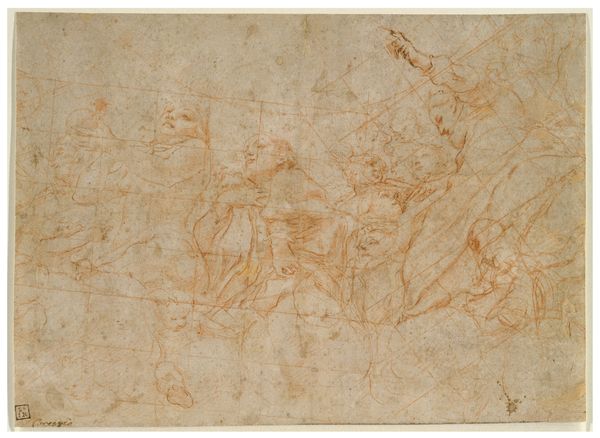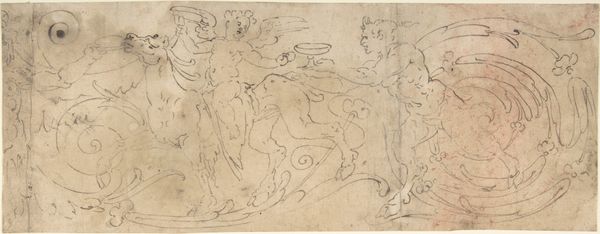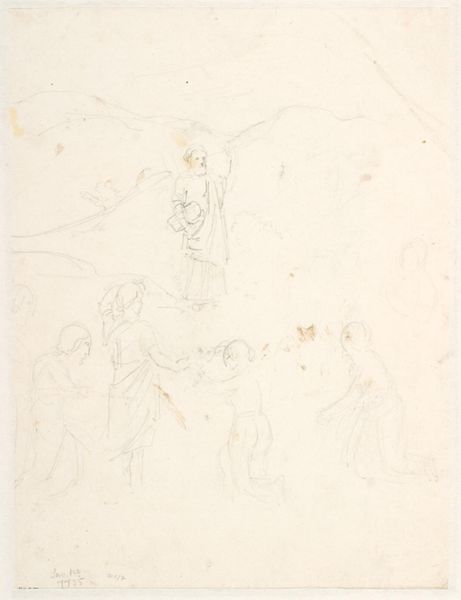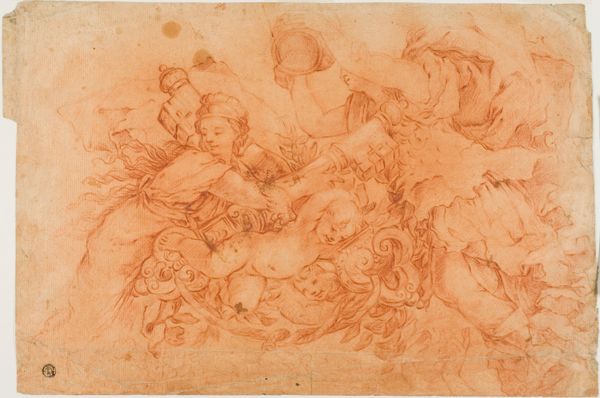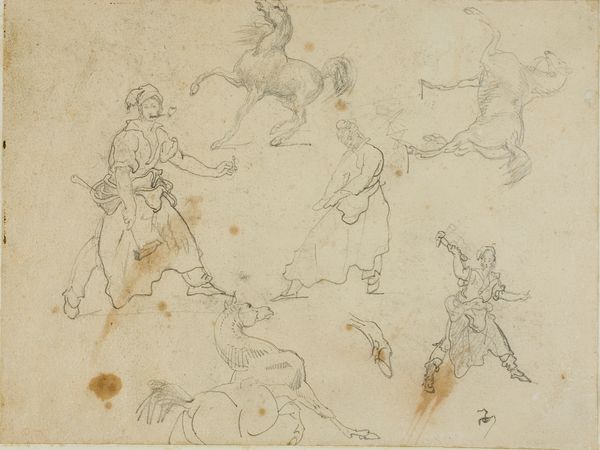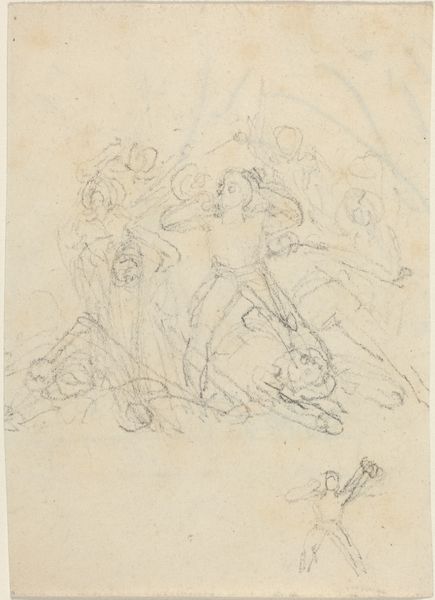
drawing, print, ink
#
drawing
#
baroque
#
ink painting
# print
#
figuration
#
ink
#
horse
#
men
#
history-painting
Dimensions: 3-1/2 x 3-3/4 in. (8.9 x 9.5 cm)
Copyright: Public Domain
Curator: Let's delve into "Cavalry Charge," an ink drawing attributed to Francesco Allegrini, dating from the mid-17th century, here at the Met. Editor: Wow, my first thought? It feels like a sketch stolen from a dream! All whirlwind and frantic energy, like trying to capture a moment that’s already fading. Curator: That's an insightful take. Allegrini was working within the Baroque style, known for its drama and dynamism, and the subject matter, a history painting, reflects the period’s fascination with power, conflict, and grand narratives. Editor: Power, definitely. Look at the figures on horseback, arms raised, weapons brandished. There's this sense of immediate, violent action… but at the same time, the figures are so loosely rendered, they're almost abstract. It's like violence made ethereal. Curator: The loose lines were indeed quite common in Baroque sketches meant to explore compositions, which could eventually lead to prints. Allegrini likely conceived this as a preliminary exploration of movement. Notice how he uses line weight to suggest depth and focus? Editor: Absolutely. It almost feels like an explosion of forms rather than figures, really raw. Almost primal! Do you think it's a glorification of battle? Curator: Possibly, or it might simply document such events—visualizing a military and political culture of the time. Artworks like these served important political purposes in promoting and shaping contemporary opinions. Editor: Hmmm… Well, politics aside, I see such chaos depicted in these frantic strokes—something almost tragic too, beneath all that bluster. The impermanence of human conflict etched onto paper. A quick study of the battle charge—both exciting and horrifying! Curator: Indeed! This initial dialogue helps us not only observe, but also understand the multilayered complexity embedded in such works on paper. Editor: Right, seeing art this way always lets the piece speak, but also gets it speaking *to* us, you know? Like striking a match in the dark.
Comments
No comments
Be the first to comment and join the conversation on the ultimate creative platform.

